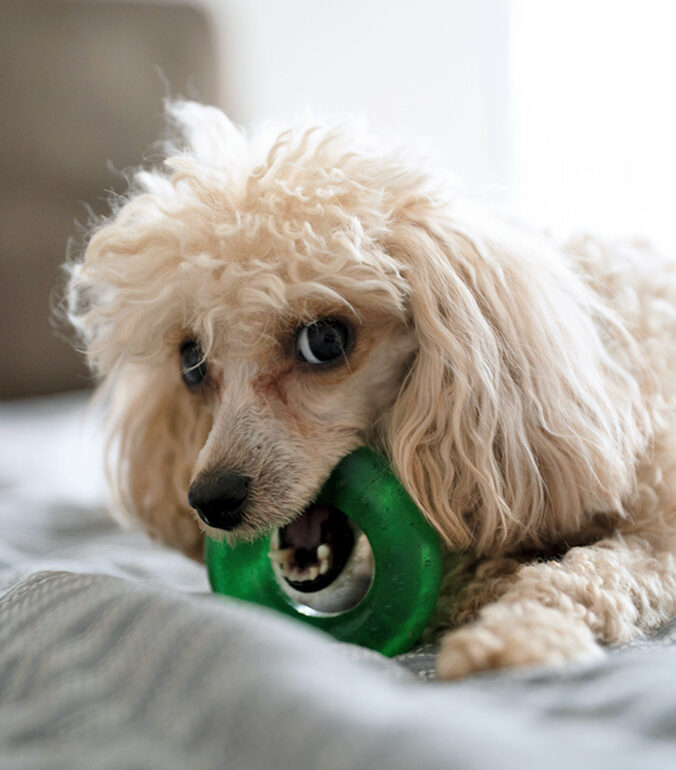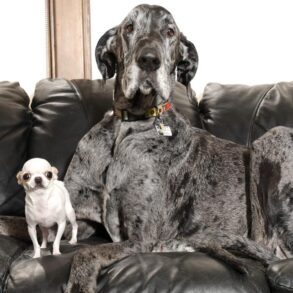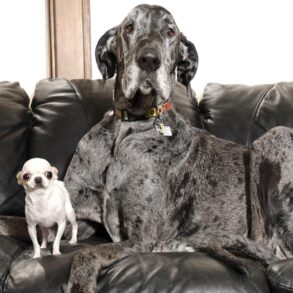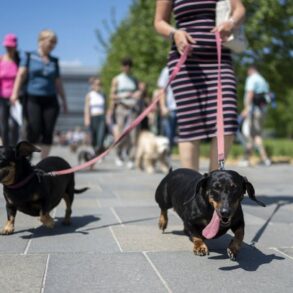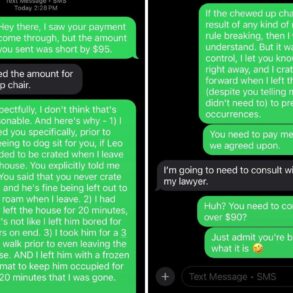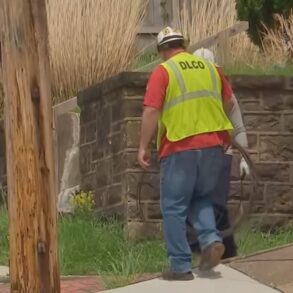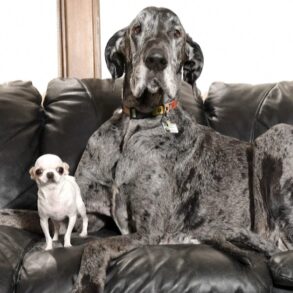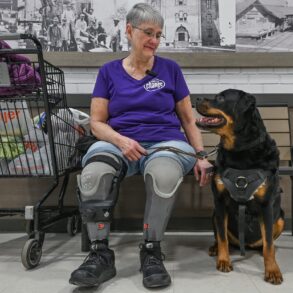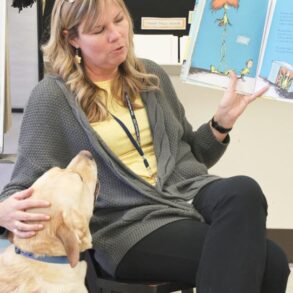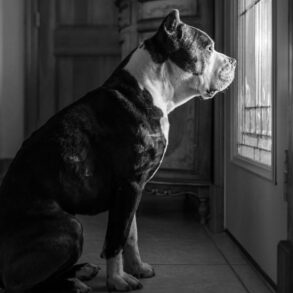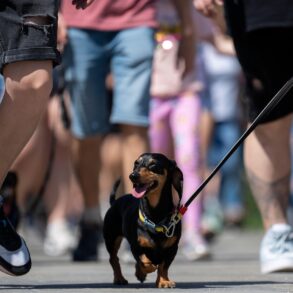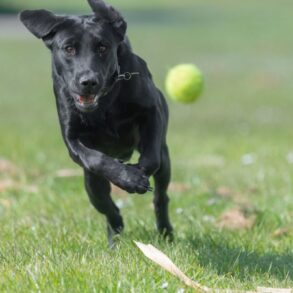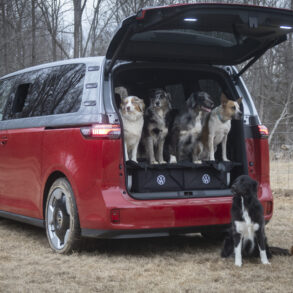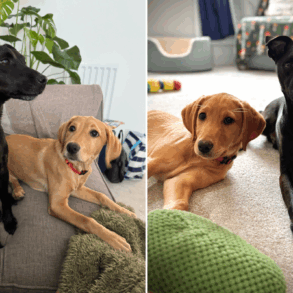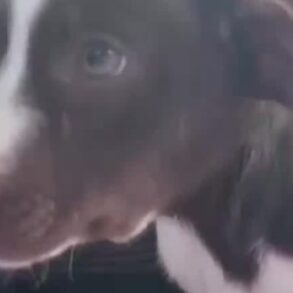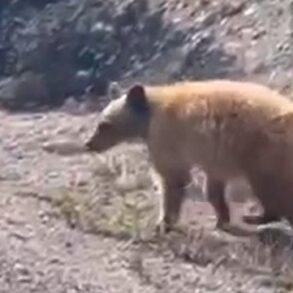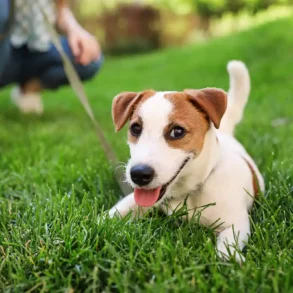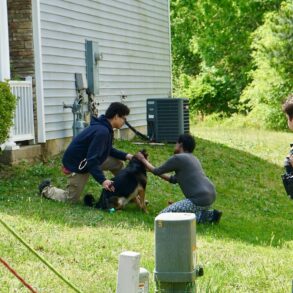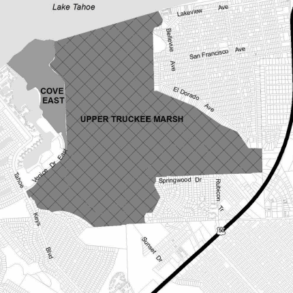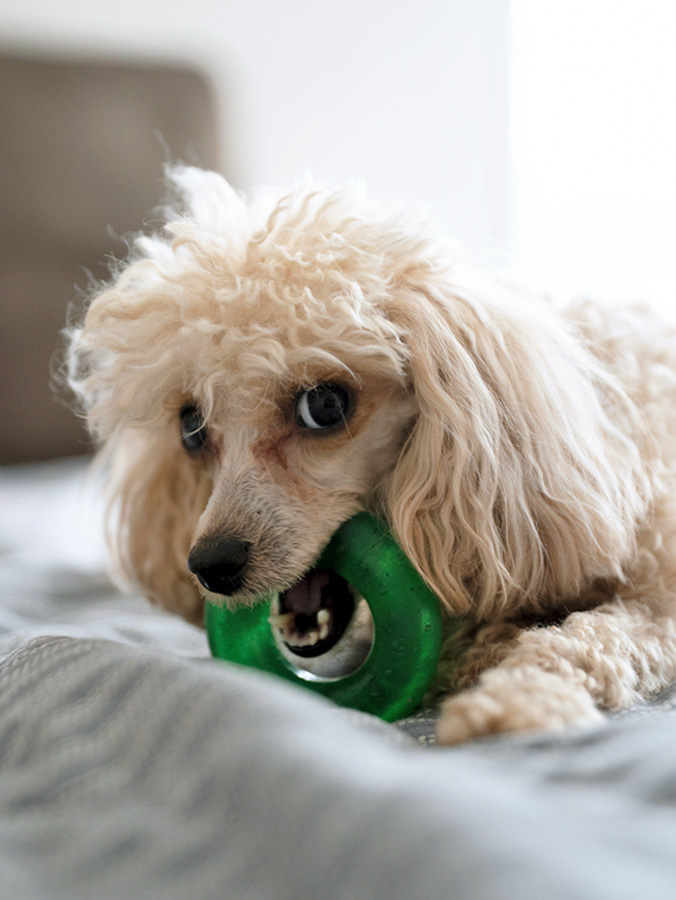
I vividly remember my dog Grendel’s worst episode of toy-aggression. A friend and I had planned to go snowshoeing with our baby daughters on our backs. My friend arrived and let her dog, Monty, out of her car before I had a chance to remove Grendel’s tennis ball from the yard. Monty went for the ball, and Grendel went for Monty. We couldn’t break up the fight because of our babies and resorted to shouting until the dogs separated, leaving blood on the snow behind them.
This is an extreme example of toy-aggression, also known as resource guardingopens in a new tab. Paige Gordon, a certified professional dog trainer at SpiritDog Trainingopens in a new tab, defines it as protective behavior towards a possession or a resource a dog is afraid of losing. It’s behavior that originates in their instinct of perceived threat. “If your dog is exhibiting the signs of resource guarding or aggression around their toys, this is something that generally needs to be addressed immediately, as it is a behavior that can escalate and become a safety concern quickly,” Gordon says.
What is toy-aggression in dogs?
Joseph Ryan, owner of Force Free DC Dog Training and Behavior Consultingopens in a new tab, says every animal species guards resources they believe are valuable. Signs of toy-aggression may include growling and other body languageopens in a new tab that sends warning signals. Reactivityopens in a new tab to an unwelcome advance may turn to aggression, like Grendel’s attack on Monty. “Dogs will display space-making behaviors, such as snarling or growling, giving the other dog or approaching person a chance to walk away safely,” Ryan says.
Toy-aggression is different than the behavior your dog exhibits when they’re ripping up toysopens in a new tab (which is aggressive, but only towards the toy — not you or another dog). It’s also different than the behavior your dog exhibits when they want to playopens in a new tab (an open, grinning mouth, wagging tail, and enthusiastic play bow).
What makes a dog toy-aggressive?
Gordon explains that dogs understand what’s currently in their possession as “theirs” and generally develop toy-aggression out of fear of losing an object they value. Some dogs may value one toy more than others, such as a ball. “They don’t understand that if someone were to take the toy they’re playing with, they have a whole bin of toys off to the side,” Gordon says. If you notice your dog becoming attached to a particular toy, try introducing them to one they haven’t used in a while for a game of tug or fetch.opens in a new tab
Ryan says dogs assign value to toys on a changing basis. “A toy that the dog guards one day might not be as exciting the next day, or maybe it takes their dog sibling or friend playing with it to remind them how exciting it can be.”
Why some dogs resource guard their toys
Gordon says dogs with a high toy drive are more likely to exhibit resource guarding and toy-aggression. It’s similar to human impulses around certain items, Ryan says. “In the moment, they want it and don’t want to give it up,” he says.
Signs your dog has toy-aggression
Playing keep away or hiding their toys, growling when you approach to take their toy, and refusing to give up a toy are sure signs of toy-aggression. Other signs are snapping, hunching over toys, and getting tense or freezing, Gordon says. “One sign is taking the toy and running into another room to avoid being bothered,” Ryan says. “When you approach, they may stop playing and stare at you.”
Is toy-aggression bad?
Toy-aggression is normal behavior, Ryan says. It’s cause for concern, Gordon explains, when it escalates and becomes a safety risk. “Like, if your dog gets to the point where they may bite if you try to take away the toy,” she says.
What to do if your dog has toy-aggression
As soon as you notice your dog guarding a toy, take action. Begin limiting access to prized items and teach the “drop it” cue, Gordon advises. Ryan concurs. “We want to manage the situation around kids, unfamiliar people, and other dogs, and teach the dog a solid ‘leave it,’ or ‘drop,’ or ‘trade’ cue for when we need an item,” he says.
Step-by-step training guide for toy-aggression
“Counterconditioning” is the technical term for the method of teaching your dog to associate something they like, such as treats, with you taking something they’re guarding. “Desensitization” is the term for getting your dog used to your approach when they’re engaged with something they value. The more you practice counterconditioning, the more desensitized your dog becomes to you reaching for and taking their toy.
Step 1: Start by standing far enough away to avoid prompting a reaction from your dog, and toss high-quality treats to them. The goal is to associate your presence with something they enjoy as much as the object they’re guarding, and begin to develop a positive emotional response to your approach.
Step 2: Step closer, expecting your dog to begin demonstrating aggressive behavior. Back away and approach again, continuing to toss treats. Work at each level of intensity until your dog is comfortable, then progress to the next level. The goal is to be able to approach your dog and take their toy. This may take days, weeks, or months, depending on the intensity of the toy-aggression.
Step 3: Ultimately, you should be able to approach your dog, take their toy, and give it back without a display of aggression. Practice doing this regularly to prevent toy-aggression.
How to prevent toy-aggression in dogs
Resource guarding may have a genetic component that’s hard to avoid, Gordon says, but every dog benefits from a well-trained and practiced ‘drop it’ cue. She says don’t ever forcefully pull a toy out of a dog’s mouth, and always try to prevent other dogs in the house from stealing each other’s toys.
When to call a professional to help with toy-aggression
“If your dog is escalating the resource guarding to the point where they seem like they may bite or are trying to bite, you should call in a trainer who specializes in resource guarding and aggression,” Gordon says.
Bottom line
-
Toy-aggression is normal behavior for dogs of any breed.
-
Untreated, it becomes dangerous.
-
Lack of training around toy-aggression, and not a dog’s breed, contributes to this aggression.
FAQs
What is resource guarding in dogs?
Resource guarding is defined as protective behavior towards a possession or a resource that a dog is afraid of losing. Signs include hiding toys, playing keep away, hunching over a toy, tensing up, growling, and snapping when they perceive a person or another dog threatening their toy.
How do you fix toy-aggression in dogs?
As soon as you notice toy-aggression, limit access to toys, train (or reinforce) the “drop it, ” “ leave itopens in a new tab” or “trade” cue. Also, begin desensitizing your dog to your approach when they have a toy.
How to get dogs to stop fighting over toys?
To prevent dogs, especially in multi-dog households, from taking each other’s toys, limit access to coveted toys (like a peanut butter-stuffed Kongopens in a new tab) and create designated times for each dog to enjoy the toy. Or separate spaces if you have identical toys.
This post was originally published on this site be sure to check out more of their content.




